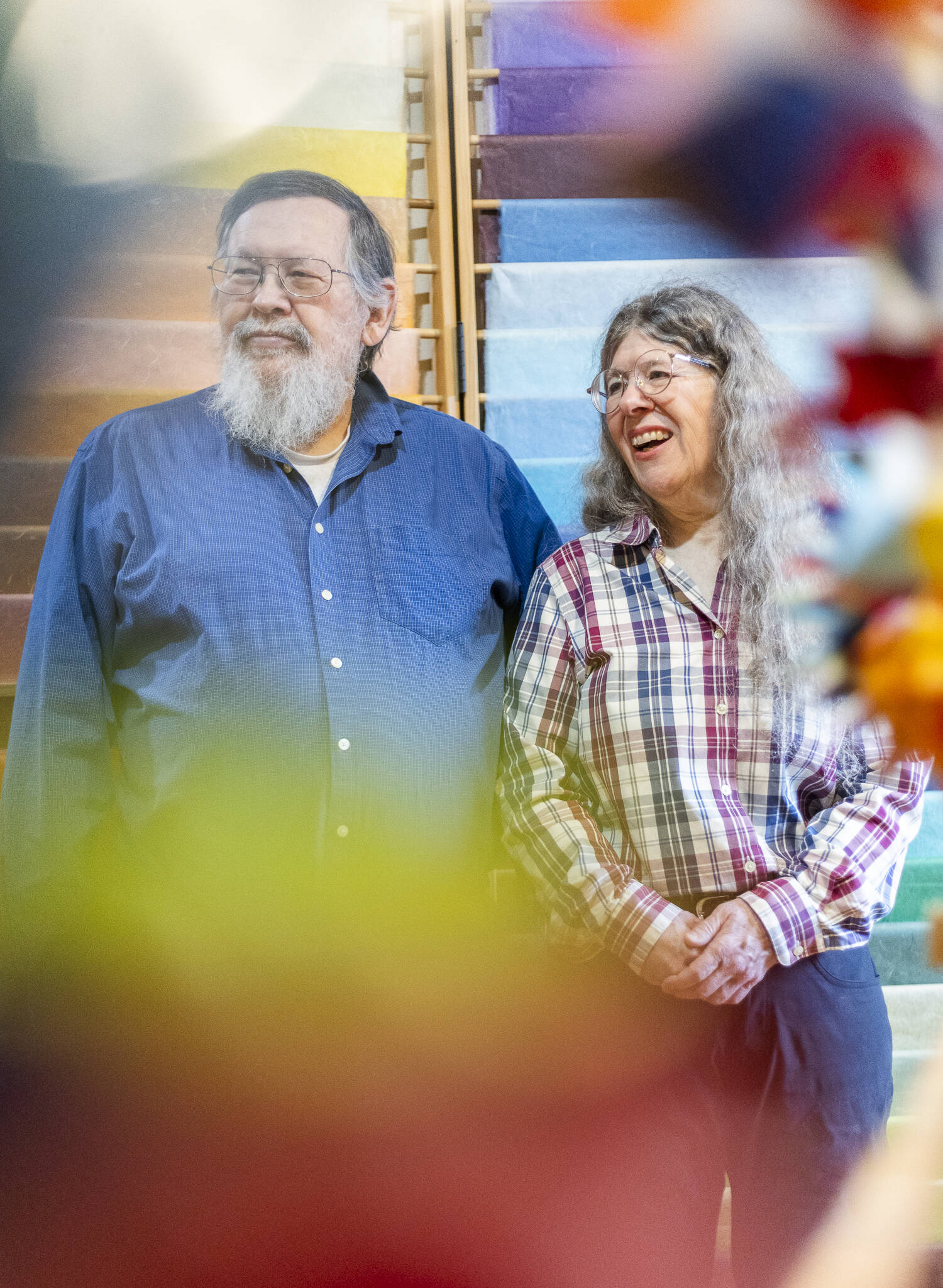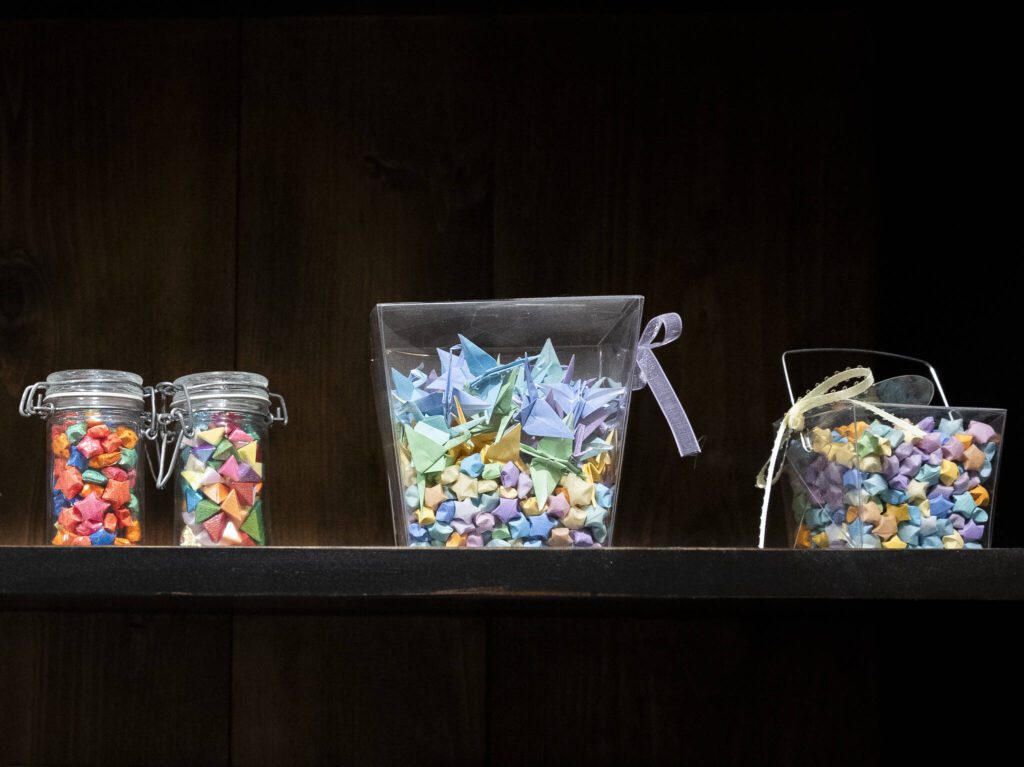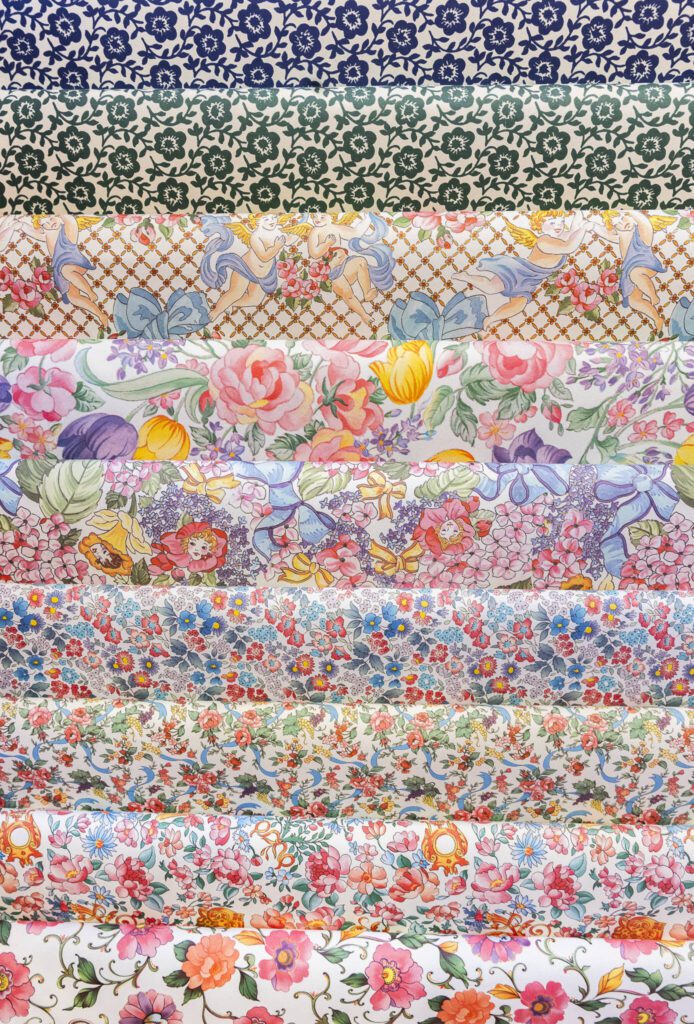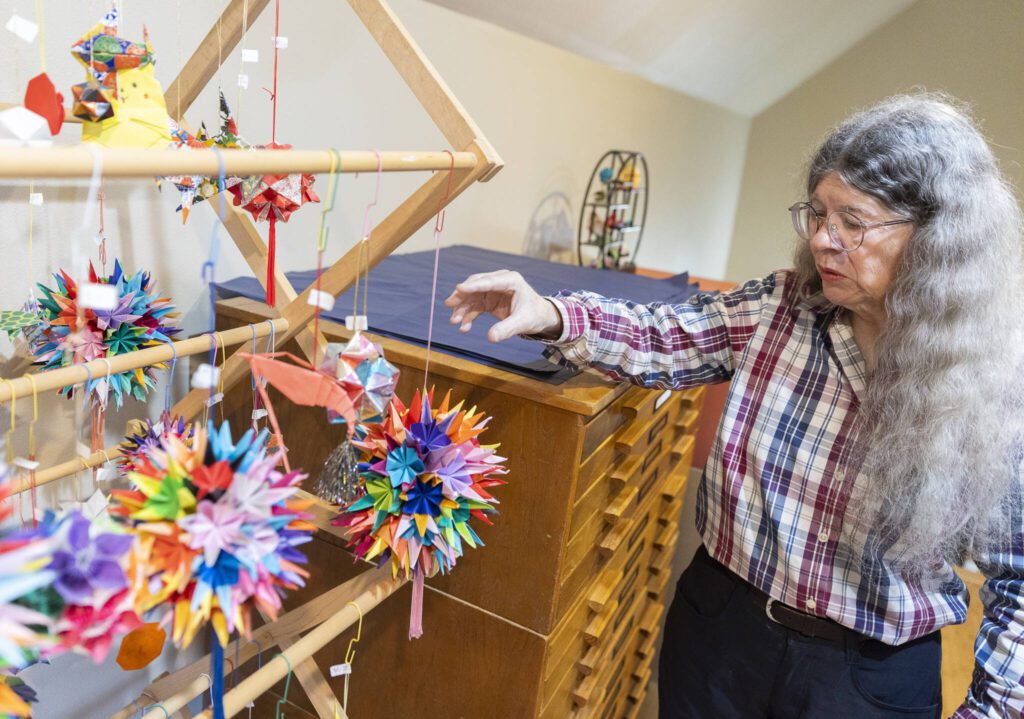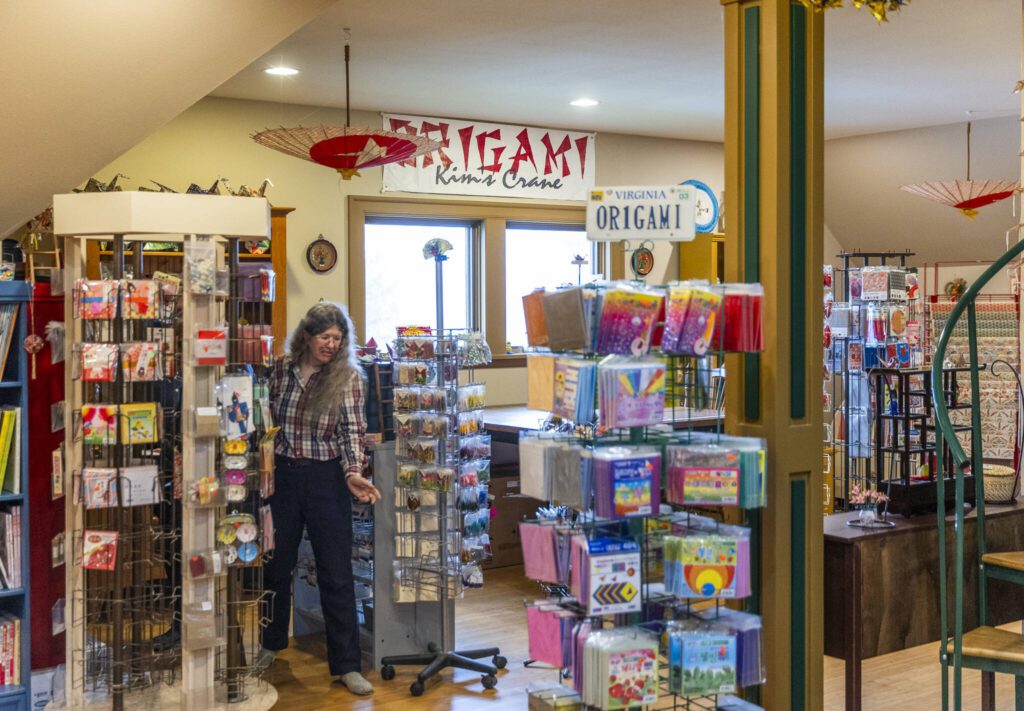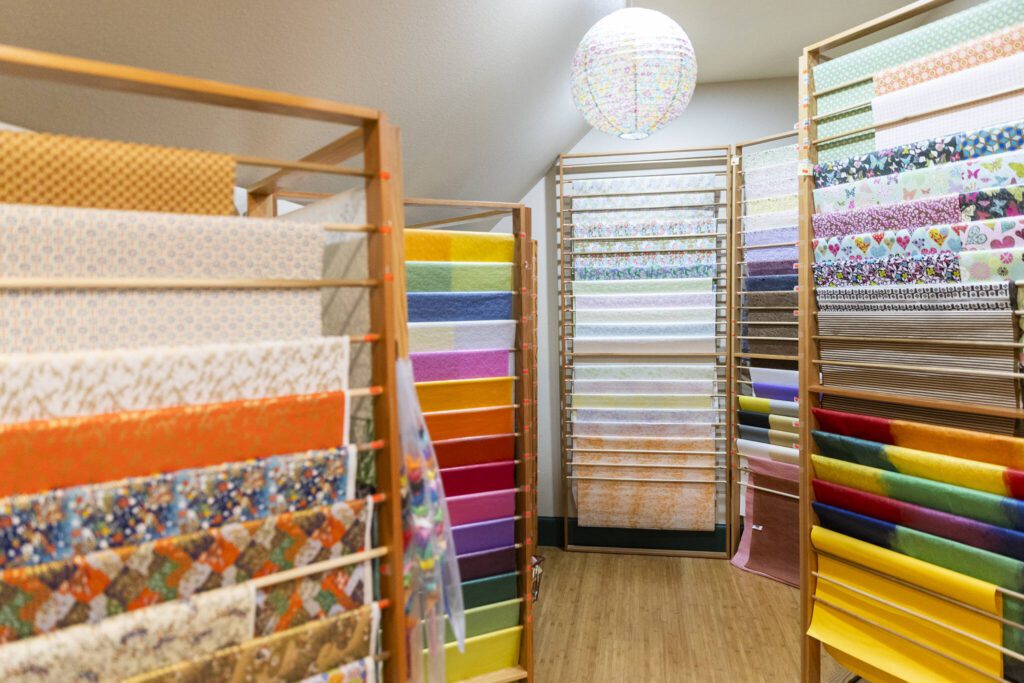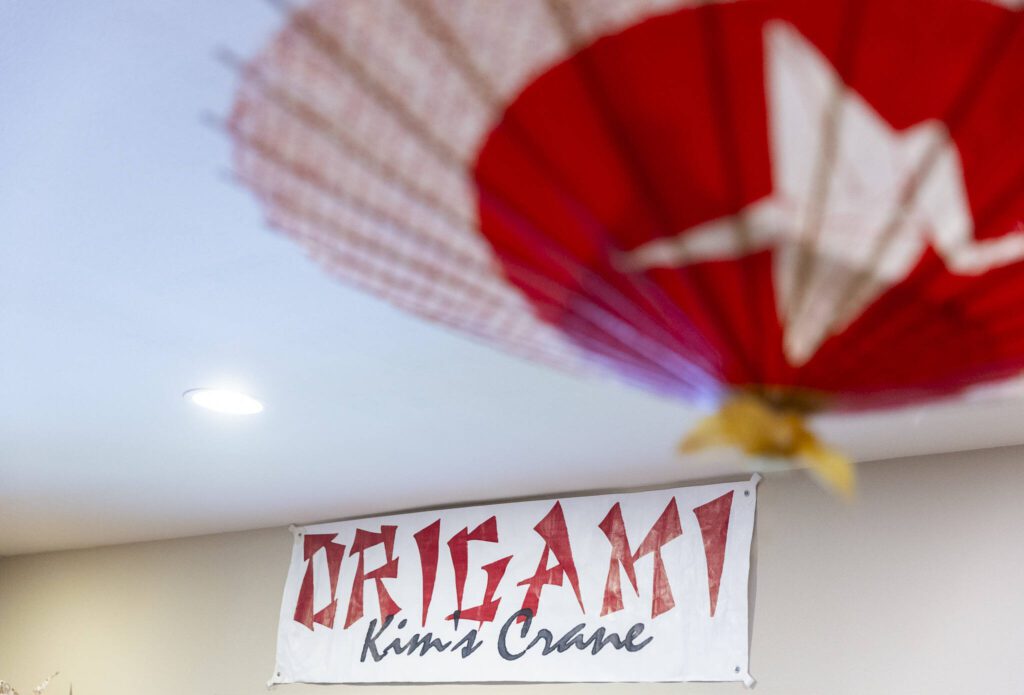SNOHOMISH — A tantrum in a toy store was Kim Crane’s introduction to the gentle art of Japanese paper folding. When her mother refused to buy her an origami kit, 6-year-old Kim began tearing up the store.
It was too much for Mom. “She broke down and bought it,” Crane said with a laugh.
Crane was immediately smitten and spent hours learning how to fold ’em. “It just grew on me,” she said.
Often described as a quiet, meditative art, origami would later become her refuge during a decades-long career as a high-stakes government research analyst.
“You can tell how stressful my job was,” said Crane, now retired, pointing to a tiny menagerie of animals and intricate 3-D shapes she folded when she was still working.
Thirty years ago, she took her hobby one step further and launched Kim’s Crane, an online venture aimed at supplying her fellow origamists with paper.
In 1995, the business was one of a few hundred e-commerce stores, a short list that included the auction site eBay and a garage-based Bellevue bookseller called Amazon.
“When we started out, it was very hard to find paper locally. Now it’s easy,” said Kim’s husband, Gordon Crane, a retired software engineer and fellow paper folder.
Then and now, Kim’s Crane sells origami and craft paper, books, kits and handmade paper from Italy, Germany, Korea, Japan, Taiwan, Thailand and Turkey.
It’s still an online-only retailer, but when the couple moved to Snohomish several years ago, they built a showroom, really, a fully-stocked store that’s open to visitors by appointment only. “Email us a week ahead of time and let us know what you’d like to see,” Gordon Crane advised.
Inside, you’ll find racks and drawers brimming with paper, patterned, textured or solid, as well as shelves of how-to books and many collector’s items. You can also view the couple’s handiwork ranging from Kim’s tiny paper crane earrings ($12 a pair) to a menacing plate-size crab made from a single 5-foot square sheet of paper.
Prices range from less than a dollar to $100 for 4,000 sheets of double-sided craft paper.
“At one time, we had the largest selection of origami papers and books on the Internet — 3,000 items,” Gordon Crane said. “We’re down to about 2,000 now.”
That’s still plenty for LuGene Bé. The New York resident was searching online for a type of handmade paper, known as mulberry paper, when she discovered Kim’s Crane.
“They were a great find,” said Bé, who helped craft origami elephants for the Christmas tree at the American Museum of Natural History in New York City.
“I liked their variety,” she said. Kim’s was also a paper source for her biggest project: Folding 1,000 cranes — a symbol of good luck — for her wedding.
WHAT’S YOUR PAPER JAM?
One fold or hundreds, origami has been around for nearly two thousand years. Paper folding is believed to have originated in China soon after the invention of paper in 105 A.D.
Five hundred years later, it made its way to Japan, where it got its name: ‘ori’ means ‘to fold,’ and ‘gami’ means ‘paper.’ Put them together, and crease is the word.
And lest you think origami is only for kids, the art of creating three-dimensional objects from a flat sheet of paper is helping researchers design microchips, medical devices and telescopes.
Its real-world applications are many, from the precise folds of an automobile airbag to the launch of the James Webb Space Telescope, a lens so big it had to be folded “origami-style into the rocket,” according to NASA scientists.
When researchers set out to create a new heart stent, they were inspired by origami’s water-bomb base, commonly used to make butterflies and paper balloons. The resulting stent is small enough to fit through a catheter but can be expanded when it reaches a clogged artery.
Flowers, hearts, boxes, animals, insects and mythical creatures: there are designs for everyone, Kim Crane said.
Get started with origami books, YouTube videos and in-person workshops. Happily, there are no hard and fast rules.
Traditional paper folders might sniff at the use of glue, scissors or tape. Crane, however, encourages customers to cut the cord on convention.
“It’s your paper, your creation,” Crane said. “Do what you want!”
Mariani Kizer, a North Seattle artist, agrees.
“Who says the paper must be square or you can only use one sheet? Start with any shape that works for you,” said Kizer, who donates her original origami figures to Woodland Park Zoo fundraisers. “My best year, I raised $450.”
Kizer began folding cranes, a traditional Japanese design, at age five. She stuck with the familiar water bird until she was age 10, at which point her mom asked if her if she wanted to learn more. “There’s moreeee???’” was her wide-eyed response.
Today, she’s known for her origami fossils, dinosaur skeletons made from 30 or more sheets of paper that can take up to 40 hours to fold.
“If you can fold a crane, you can fold a stegosaurus. You just need an attention span,” Kizer said.
Terry Allen, a frequent visitor to the Cranes’ showroom, leads P.A.P.E.R., Puget Area Paper Folders Enthusiasts Roundtable. The group, a sub-chapter of Origami USA, offers free workshops and monthly gatherings. Beginners are welcome.
“Just show up,” Allen said. “A lot of our workshops are held at libraries. We want people to just walk in.”
At a recent P.A.P.E.R. meeting at the Greenwood Library in Seattle, Kizer offered step-by-step instructions on how to fold a stegosaurus. It was standing room only, nearly 20 people of all ages crowded into the library’s activity room to share tips and paper.
“Our group is about getting together and sharing the joy and fun of origami,” Allen said. “You’ll get a young kid teaching someone who could be their grandmother’s ago … or a 45-year-old architect working with a teenager.”
“Old, young, people who don’t speak English as their first language — I don’t think you’ll find a more diverse group of people loving one thing,” Allen said.
Contact writer Janice Podsada at jpod2024@gmail.com
IF YOU GO:
Kim’s Crane:
Web: kimscrane.com
Phone: 360-794-9862
Email: kim@kimscrane.com
To visit Kim’s Crane’s Snohomish showroom by appointment: email at least a week in advance and list up to 10 items you’d like to see.
Puget Area Paper Folders Enthusiasts Roundtable P.A.P.E.R: go to www.facebook.com/NWPAPER for monthly meetings and workshops.
Sound & Summit
This article is featured in the summer issue of Sound & Summit, a supplement of The Daily Herald. Explore Snohomish and Island counties with each quarterly magazine. Subscribe to receive all four editions for $18 per year. Call 425-339-3200 or go to soundsummitmagazine.com for more information.
Talk to us
> Give us your news tips.
> Send us a letter to the editor.
> More Herald contact information.
